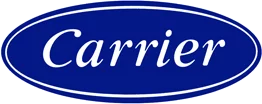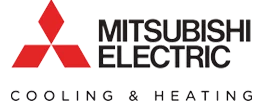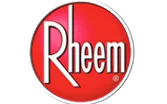Condensation in HVAC Systems: When It’s Okay and When It’s Not

Condensation is a natural side effect of in-home cooling. Any air conditioner will produce condensation and units are designed to safely deal with the resulting water. In fact, many see the condensation effect as a plus because it allows an AC to act as a dehumidifier for the home. However, if your HVAC condensation system stops working the way it’s supposed to, problems can occur.
Understanding the difference between normal and problematic condensation can help you maintain your home’s HVAC system and avoid potential damage. Let’s take a closer look at when condensation is or is not okay before the situation gets serious.
When Condensation in HVAC Systems Is Okay
Condensation is a normal function of air conditioners, cooling heat pumps, and dehumidifiers. When the units are working correctly, condensation is nothing to worry about.
Air Conditioners’ Condensation Running Normally in HVAC Systems
When your AC is running, condensation is normal. The cold interior of the AC unit causes water to condense on the coils and interior panels. That water runs into the condensate pan and is then removed through the drain line. The cold itself inside your AC causes condensation as a side effect. This also allows your AC to function as a dehumidifier that you don’t have to empty.
Heat Pumps in Cooling Mode
Heat pumps work exactly like traditional air conditioners when in cooling mode. The coolant and coil system produces cold inside the unit which causes condensation. Heat pumps in cooling mode also have a condensate pan and a drain line, and they also provide dehumidification for the house.
Dehumidifiers
A separate dehumidifier typically also uses condensation to collect moisture from the air. You will typically need to empty the tank after a few hours, as free-standing humidifiers usually do not have a drain line.
When Condensation is Not Okay
There are situations where condensation can become a problem. This usually occurs when your AC or heat pump unit is not operating the way it should so that the water from condensation either floods or freezes.
Blocked or Clogged Drain Lines
Your AC needs the pan and drain line to remove water that collects through condensation. If the drain lines are blocked for any reason, water will build up and eventually flood the unit. This can lead to leaks inside your utility space including the risk of water damage, electrical damage, and mold growth.
A partially blocked drain can also lead to standing water, which can stagnate and become a scummy pool for microbiology that you do not want inside your home ventilation system.
Improperly Sized or Installed Units
HVAC units represent a careful balance of size and function. If your HVAC is the wrong size for your house or other components in the system – or if the unit is poorly installed, the system may not handle condensation correctly. This can lead to an excess build of water, leaks, water damage, or inefficient cooling.
Damaged or Dirty Coils
If ice is forming on your coils and inside your AC unit, something has gone wrong. Dirty coils develop an insulating layer of dust which traps and enhances cold. This can cause moisture inside an AC unit to turn to frosty ice instead of draining correctly. Damaged coils may also over-cool, leading to ice buildup instead of drainage.
This leads to reduced HVAC efficiency, damage to the unit, freeze-ups, and the potential for water damage when the ice melts and overflows the condensate pan.
Regular maintenance, including cleaning the coils, helps prevent these issues and ensures efficient operation.
High Indoor Humidity Levels
If your home is experiencing high humidity, your HVAC may be malfunctioning. Incorrect condensation management can lead to humidity problems because the AC can no longer operate as a dehumidifier.
Condensation Leaks in the HVAC Systems
A leak in the refrigerant line can cause evaporator coils to inappropriately freeze and thaw. This temperature flux leads to water leaks and condensation issues.
Duct leaks can allow un-conditioned humid air to enter the system, increasing condensation and reducing overall efficiency.
How to Address Problematic Condensation in HVAC Systems
- Regular Maintenance – Schedule an inspection, cleaning, and repair of your HVAC once or twice a year. Your qualified HVAC technician will clean coils, check drain lines, and ensure proper system operation. Don’t forget to change your air filters every month, as well.
- Proper Installation – Make sure your HVAC system is the right size and properly installed by professionals. Have your ductwork inspected and any problems repaired.
- Monitor Humidity Levels – Keep track of the humidity in your home with a hygrometer. Use a humidifier or dehumidifier to keep the humidity between 30%-50%
- Address Leaks Promptly – Call for repairs as soon as you notice any signs of water or refrigerant leaks. A professional technician can immediately diagnose and repair the issue.
Know Your Condensation in HVAC Systems
We hope you learned a lot about condensation in HVAC systems. Every air conditioning unit experiences some condensation. It is part of the normal function and provides dehumidification for your home. However, if condensation begins to flood or freeze, it’s time for HVAC maintenance. Avoid risks like water damage, mold growth, or poor AC efficiency by calling for an HVAC inspection and repair as soon as you notice a problem.
By understanding the difference between normal and problematic condensation, you can take proactive steps to maintain your HVAC system, ensuring it operates efficiently and effectively year-round. Aztil is here to help you keep your home cool, comfortable, and condensating correctly. Contact us for your HVAC maintenance needs.












